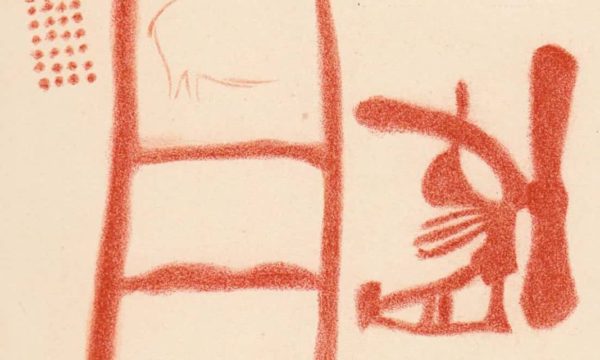
Drawing of Panel 78 in La Pasiega by Breuil et al (1913). The red scalariform (ladder) symbol has a minimum age of 64,000 years but it is unclear if the animals and other symbols were painted later. Photograph: Breuil et al
In his essay, Why Africana History?, the great scholar and historian Dr. John Henrik Clarke wrote: “The Europeans not only colonialized most of the world, they began to colonialize information about the world and its people. In order to do this, they had to forget, or pretend to forget, all they had previously known about the Africans.” Dr. Clarke’s words are still very relevant today, evident by the fact that textbooks in Texas recently began referring to enslaved Africans as “workers” rather than a group of people who were forcibly taken from their homes in bondage. In addition, the ancient Egyptian Queen Nefertiti was recently portrayed as a white woman by a scientist claiming to have created a scientifically accurate facial reconstruction based on her skull.
The Guardian, one of UK’s most prominent daily newspapers, recently published an article titled, Neanderthals – Not Modern Humans – Were First Artists on Earth, Experts Claim, that also trekked down the path of distortion and confusion. In describing what the title suggests, the author wrote, “More than 65,000 years ago, a Neanderthal reached out and made strokes in red ochre on the wall of a cave, and in doing so, became the first known artist on Earth, scientists claim.”
Even if it is true that Neanderthals were first to master artistic creativity, the evidence presented in the article did not support the claim. The “major breakthrough” that led the researchers to conclude the art in the Spanish caves were created by Neanderthals was the time period the cave art was supposedly created. However, other research has been presented, even by The Guardian itself, that older art existed in the world.
Moreover, the author only briefly mentions that not all researchers agree with this hypothesis but neglects to present any evidence from an opposing viewpoint. This leaves readers to assume there are no respected scientific studies that provide a contradicting viewpoint.
One reader of The Guardian’s article took notice and penned a letter to the publication criticizing the writer for asserting such a conclusion when a previously published Guardian article presented evidence to the contrary.
John Picton from Evesham, Worcestershire wrote, “Given all the recent publicity about the attribution of European cave paintings to Neanderthal artists at an earlier date than expected for Homo sapiens …it is a pity the Guardian does not recall its own previous headlines.”
The article Picton referenced was entitled, World’s First Artwork Found in Africa. In this earlier Guardian report covering research published in Science Magazine, the author proclaimed that “Two tiny pieces of engraved ochre are the oldest works of art ever discovered.” It read further, “The artist in mankind was awakened, in Africa at least 77,000 years ago.” The artifacts were found in Blombos Cave in South Africa and the scientist concluded, “the pieces are carved with a pattern of crossed lines, showing that humans had a capacity for abstract thought, and use of symbols, tens of thousands of years before they spread from Africa to Europe.”

In addition to Stringer’s opposing view, it was reported earlier this year by many news outlets that a fossil found in Israel and stone tools found in India indicate modern humans may have left Africa as much as 100,000 years earlier than previously thought. So it can not be ruled out that modern humans created the cave art that scientist in the Guardian article credits to Neanderthals.
There are usually multiple sides of a scientific debate. Scientific journalism should consistently reflect this when covering such topics. The Guardian could have invested a little more time to provide opposing views. It is not enough to just publish a reader’s letter that objects to a conclusion made by a team of scientist.
Due to the historical need of white supremacy to colonize information and reinforce the claim that all of humanity’s greatest leaps occurred in Europe, this duty may have been overlooked, or worst, purposely avoided. Today it seems too many mainstream outlets are too eager to publish any research that chips away at the body of evidence supporting the idea that Africans were the first contributors to humanity’s greatness.


